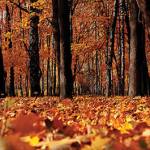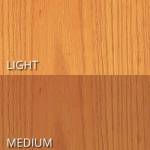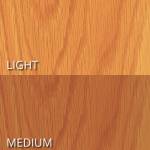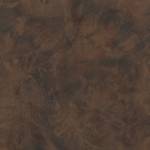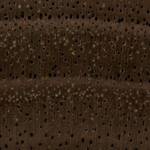Ash Wood(Fraxinus spp)

DISTRIBUTION Throughout U.S.
General Description
The sapwood is light-colored to nearly white and the heartwood varies from grayish or light brown, to pale yellow streaked with brown. The wood is generally straight-grained with a coarse uniform texture. The degree and availability of light-colored sapwood, and other properties, will vary according to the growing regions.
Working Properties
Ash machines well, is good in nailing, screwing and gluing, and can be stained to a very good finish. It dries fairly easily with minimal degrade, and there is little movement in performance.
Physical Properties
Ash has very good overall strength properties relative to its weight. It has excellent shock resistance and is good for steam bending.
Availability
Readily available.
Main Uses
Furniture, flooring, doors, architectural millwork and moulding, kitchen cabinets, paneling, tool handles, baseball bats, sporting equipment, and turnings. It is particularly suitable for food and liquid containers since there is no odor or taste.
Red Oak
Distribution
Widespread throughout Eastern U.S. Oaks are, by far, the most abundant species group growing in the Eastern hardwood forests. Red oaks grow more abundantly than white oaks. The red oak group comprises many species, of which about eight are commercial.
General Description
The sapwood of red oak is white to light brown and the heartwood is a pinkish-reddish brown. The wood is similar in general appearance to white oak, but with a slightly less-pronounced figure due to the smaller rays. The wood is mostly straight-grained, with a coarse texture.
Working Properties
It machines well. Pre-boring is recommended for nailing and screwing. It can be stained to a golden finish, with a wide range of finish tones.
PHYSICAL PROPERTIES
Red oak is hard and heavy, with medium-bending strength and stiffness and high-crushing strength.
AVAILABILITY
Abundant. It is the most widely used species.
MAIN USES
Furniture, flooring, architectural millwork and moulding, doors, kitchen cabinets, paneling, and caskets.
White Oak(Quercus spp)

DISTRIBUTION
Widespread throughout Eastern U.S. The white oak group comprises many species; of which about eight are commercial.
General Description
The sapwood is light-colored and the heartwood is light-to-dark brown. White oak is mostly straight-grained with a medium-to-coarse texture. Having longer rays than red oak, white oak has more figure.
Working Properties
It machines well, nails and screws well, although pre-boring is advised. Due to its reaction with iron, galvanized nails are recommended. Its adhesive properties are variable. The wood dries slowly, but stains to a good finish.
Physical Properties
White oak is a hard and heavy wood with a medium-bending and crushing strength, low in stiffness, but very good in steam-bending. It has great wear-resistance.
Black Walnut (Juglans Nigra)
Distribution:
Eastern United States
Tree Size:
100-120 ft (30-37 m) tall, 2-3 ft (.6-1 m) trunk diameter
Average Dried Weight:
38 lbs/ft3 (610 kg/m3)
Specific Gravity (Basic, 12% MC):
.51, .61
Janka Hardness:
1,010 lbf (4,490 N)
Modulus of Rupture:
14,600 lbf/in2 (100.7 MPa)
Elastic Modulus:
1,680,000 lbf/in2 (11.59 GPa)
Crushing Strength:
7,580 lbf/in2 (52.3 MPa)
Shrinkage:
Radial: 5.5%, Tangential: 7.8%, Volumetric: 12.8%, T/R Ratio: 1.4
Color/Appearance
Heartwood can range from a lighter pale brown to a dark chocolate brown with darker brown streaks. Color can sometimes have a grey, purple, or reddish cast. Sapwood is pale yellow-gray to nearly white. Figured grain patterns such as curl, crotch, and burl are also seen.
Grain/Texture
Grain is usually straight, but can be irregular. Has a medium texture and moderate natural luster.
Endgrain
Semi-ring-porous; large earlywood pores grading to medium latewood pores, few; solitary and radial multiples of 2-3; tyloses occasionally to abundantly present; growth rings distinct; medium rays barely visible without lens, normal spacing; parenchyma diffuse-in-aggregates (sometimes very faint and barely visible even with lens) and banded (marginal).
Rot Resistance
Black Walnut is rated as very durable in terms of decay resistance, though it is susceptible to insect attack.
Workability
Typically easy to work provided the grain is straight and regular. Planer tearout can sometimes be a problem when surfacing pieces with irregular or figured grain. Glues, stains, and finishes well, (though walnut is rarely stained). Responds well to steam bending.
Odor
Black Walnut has a faint, mild odor when being worked.
Allergies/Toxicity
Although severe reactions are quite uncommon, Black Walnut has been reported as a sensitizer. Usually most common reactions simply include eye and skin irritation. See the articles Wood Allergies and Toxicity and Wood Dust Safety for more information.
Pricing/Availability
Very popular and widely available, though board widths can sometimes be narrow. Considered a premium domestic hardwood, prices are in the high range for a domestic species.
Sustainability
This wood species is not listed in the CITES Appendices or on the IUCN Red List of Threatened Species.
Common Uses
Furniture, cabinetry, gunstocks, interior paneling, veneer, turned items, and other small wooden objects and novelties.
Comments
It would be hard to overstate Black Walnut’s popularity among woodworkers in the United States. Its cooperative working characteristics, coupled with its rich brown coloration puts the wood in a class by itself among temperate-zone hardwoods. To cap it off, the wood also has good dimensional stability, shock resistance, and strength properties.

